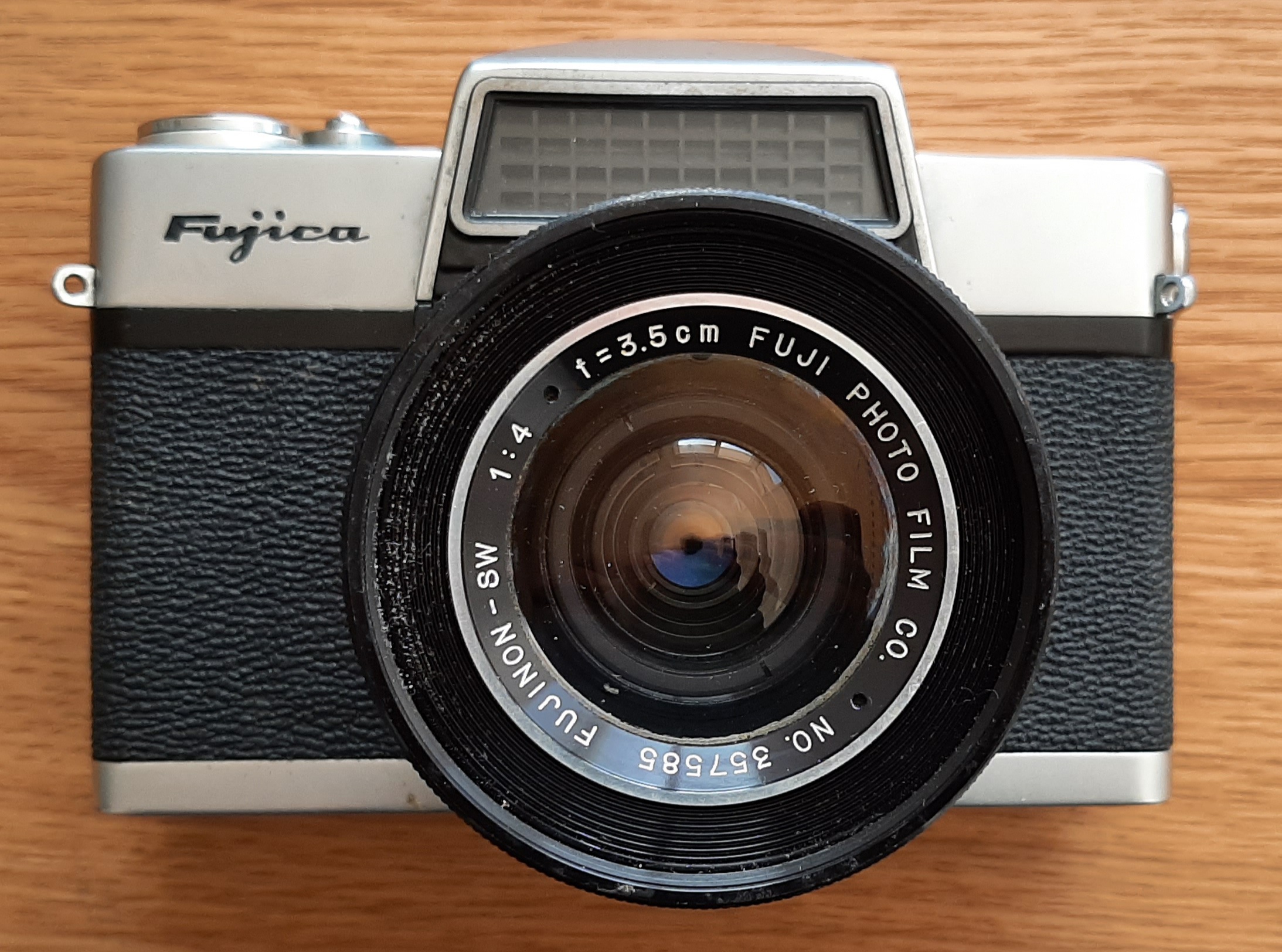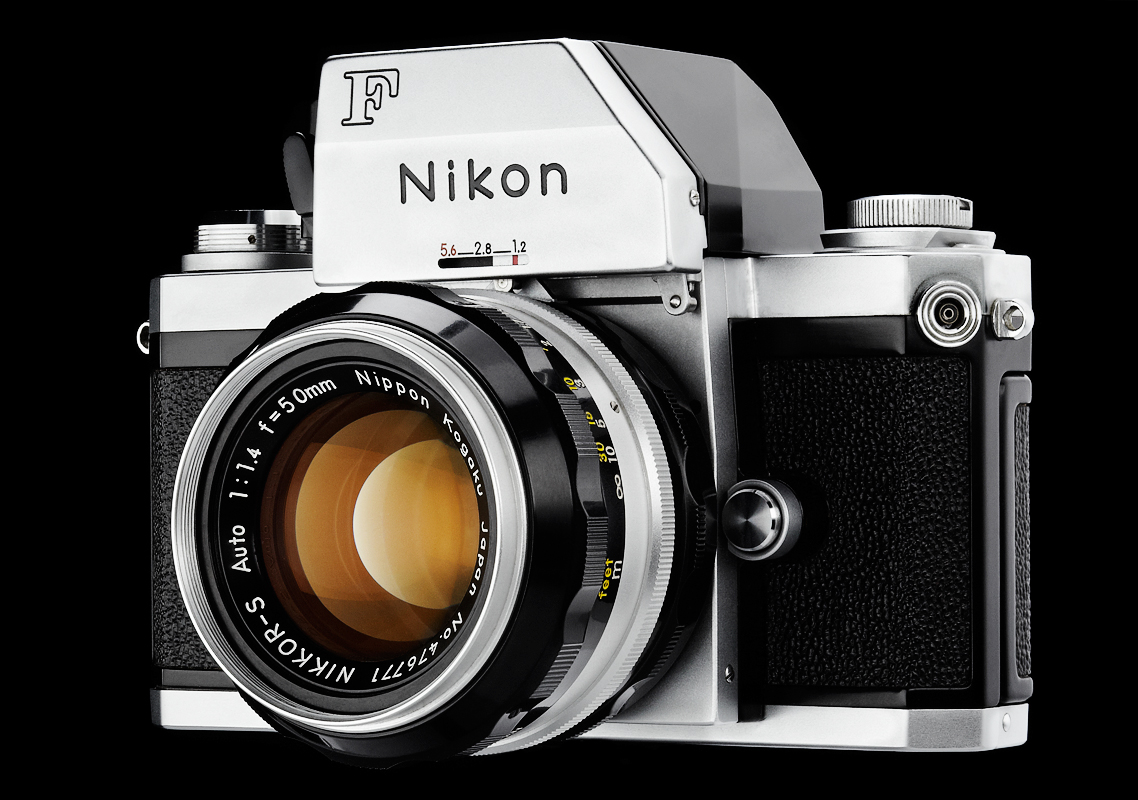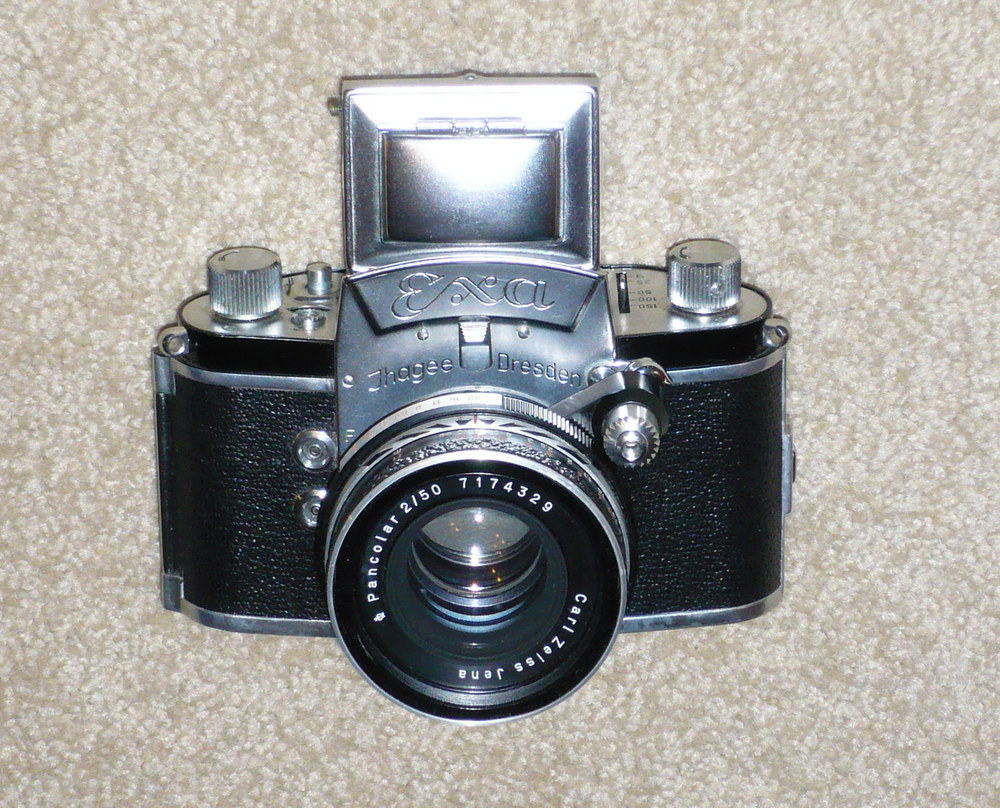|
Fujica X Bayonet
The Fujica X-mount was a lens mount created by Fujifilm in the late 1970s and early 1980s for the new Fujica SLR lineup: AX-1, AX-3, AX-5, AX Multi, STX-1, STX-1N, STX-2, MPF105X, MPF105XN. It replaced the M42 screw mount used on their earlier SLRs. The mount is a bayonet type, with a 65° clockwise lock, and a flange focal distance of 43.5 mm.AX-1 owner's manual With the advent of autofocus, the Fujica series of 35 mm SLR cameras was discontinued in 1985, rendering this mount obsolete. Fuji would return to the SLR market in 2000 with a series of digital SLR cameras starting with the FinePix S1 Pro, but these were based on Nikon designs and used the autofocus version of the Nikon F-mount. Fujifilm introduced a line of twenty-seven X-Fujinon lenses with this mount (as well as three Fujinar lenses): Fujifilm X-Fujinon lenses The following lists Fujifilm X-Fujinon lenses with this mount (not including Fujinar lenses with this mount). Not on that list are the following le ... [...More Info...] [...Related Items...] OR: [Wikipedia] [Google] [Baidu] |
Fujica
Fujica is the name given by Fujifilm of Japan to its line of still-photography and motion picture cameras. History The company was founded on January 20, 1934, as Fuji Shashin Film K.K. (富士写真フィルム㈱, later translated as Fuji Photo Film Co., Ltd.), producing several sorts of film. It was an offshoot of Dai-Nippon Celluloid K.K. (大日本セルロイド㈱), founded in 1919. The company's first Chief executive officer, CEO was Asano Shūichi (浅野修一). The plants were located in the village of Minamiashigara, Kanagawa, Minami-Ashigara (南足柄村, now a city) in the prefecture of Kanagawa (神奈川県), at the foot of Mt. Hakone (箱根山). It is said that the name "Fuji" (富士) was chosen by Asano Shūichi because of Mt. Fuji (富士山), situated not far from Mt. Hakone, but was already registered by a third party, to which the rights were bought for ¥8,000, a large sum at the time. The company started to produce optical glass during the early 1940s ... [...More Info...] [...Related Items...] OR: [Wikipedia] [Google] [Baidu] |
35mm Format
file:135film.jpg, 135 film. The film is wide. Each image is 24×36 mm in the most common "small film" format (sometimes called "double-frame" for its relationship to the "single-frame" 35 mm movie format or full frame after the introduction of 135 sized digital sensors; confusingly, "full frame" was also used to describe the Full frame (cinematography), full gate of the movie format half the size). file:LEI0060 186 Leica I Sn.5193 1927 Originalzustand Front-2 FS-15.jpg, Leica I, 1927, the first successful camera worldwide for 35 cine film 135 film, more popularly referred to as 35 mm film or 35 mm, is a Film format#Still photography film formats, format of photographic film with a film gauge of loaded into a standardized type of magazine (also referred to as a cassette or cartridge) for use in 135 film cameras. The term 135 was introduced by Kodak in 1934 as a designation for 35 mm film specifically for still photography, perforated with Film perforation ... [...More Info...] [...Related Items...] OR: [Wikipedia] [Google] [Baidu] |
Fujifilm X-mount
The Fujifilm X-mount is a lens mount for Fujifilm interchangeable lens mirrorless cameras in its X-series, designed for 23.6mm x 15.6mm APS-C sensors. Various lens manufacturers use this mount, such as Fujifilm's own XF and XC lenses, Carl Zeiss AG ( Touit lenses), Samyang Optics, Handevision, SLR Magic, Viltrox and Zhongyi Optics. Additionally, a host of adapters for a range of SLR lenses are available, allowing the mounting of lenses (without autofocus or auto aperture) from Canon, Nikon, Pentax, Minolta, Contax/Yashica, Konica and more. This mount type should not be confused with the discontinued Fujica X-mount, which is not compatible with the newer X-mount without an adapter. Fujifilm X-Mount cameras The X-mount was fist announced in January 2012 with its use in the X-Pro1 body. Fujifilm has released the following cameras that use the X-mount: Sensor: , , , , , , Fujinon XF and XC lenses Fujifilm's "XF" and "XC" lense ... [...More Info...] [...Related Items...] OR: [Wikipedia] [Google] [Baidu] |
Fujifilm X-Fujinon Lenses Line
, trading as , or simply Fuji, is a Japanese multinational conglomerate headquartered in Tokyo, Japan, operating in the areas of photography, optics, office and medical electronics, biotechnology, and chemicals. The company started as a manufacturer of photographic films, which it still produces. Fujifilm products include document solutions, medical imaging and diagnostics equipment, cosmetics, pharmaceutical drugs, regenerative medicine, stem cells, biologics manufacturing, magnetic tape data storage, optical films for flat-panel displays, optical devices, photocopiers, printers, digital cameras, color films, color paper, photofinishing and graphic arts equipment and materials. Fujifilm is part of the Sumitomo Mitsui Financial Group financial conglomerate (''keiretsu''). History 20th century Fuji Photo Film Co., Ltd. was established in 1934 as a subsidiary of Daicel producing photographic films. In the 1940s, Fuji Photo entered the optical glasses, lenses and equipmen ... [...More Info...] [...Related Items...] OR: [Wikipedia] [Google] [Baidu] |
Fujinon
Fujinon is a brand of optical lenses made by Fuji Photo Film Co., Ltd, now known as Fujifilm. Fujifilm's Fujinon lenses have been used by professional photographers and broadcast stations as well as cinematography. Fujifilm started manufacture of optical glass in its Odawara Factory in Japan in 1940, which was the start of the Fujinon brand. They were proud of their use of expensive Platinum crucibles to get the purest glass achievable at the time. Fujifilm also pioneered Electron Beam Coating (EBC) which according to Fujifilm, represented a new high in lens precision and performance. The EBC process was significantly different from other coating processes by the number of coating, the thinness of the coating, and the materials used for coating. Fujifilm claimed they were able to have as many as 14 layers of coating and used materials such as zirconium oxide, and cerium fluoride, which could not be used for coating in the conventional coating process. The first lens to offer ... [...More Info...] [...Related Items...] OR: [Wikipedia] [Google] [Baidu] |
Nikon F-mount
The Nikon F-mount is a type of interchangeable lens mount developed by Nikon for its 35mm format single-lens reflex cameras. The F-mount was first introduced on the Nikon F camera in 1959, and features a three-lug bayonet mount with a 44mm throat and a Flange focal distance, flange to focal plane distance of 46.5mm. The company continues, with the 2020 D6 model, to use variations of the same lens mount specification for its film and digital single-lens reflex camera, digital SLR cameras. The Nikon F-mount successor is the Nikon Z-mount. History The Nikon F-mount is one of only two SLR lens mounts (the other being the Pentax K-mount) which were not abandoned by their associated manufacturer upon the introduction of autofocus, but rather extended to meet new requirements related to light meter, metering, autofocus, and aperture control. The large variety of F-mount compatible lenses makes it the largest system of interchangeable flange-mount photographic lenses in history. Over ... [...More Info...] [...Related Items...] OR: [Wikipedia] [Google] [Baidu] |
Nikon
(, ; ) is a Japanese optics and photographic equipment manufacturer. Nikon's products include cameras, camera lenses, binoculars, microscopes, ophthalmic lenses, measurement instruments, rifle scopes, spotting scopes, and equipment related to Semiconductor device fabrication, semiconductor fabrication, such as Stepper, steppers used in the photolithography steps of such manufacturing. Nikon is the world's second largest manufacturer of such equipment. Since July 2024, Nikon has been headquartered in Nishi-Ōi, Shinagawa, Shinagawa, Tokyo where the plant has been located since 1918. The company is the eighth-largest chip equipment maker as reported in 2017. Also, it has diversified into new areas like 3D printers, 3D printing and regenerative medicine to compensate for the shrinking digital camera market. Among Nikon's many notable product lines are Nikkor imaging lenses (for Nikon F-mount, F-mount cameras, large format photography, photographic enlargers, and other applicatio ... [...More Info...] [...Related Items...] OR: [Wikipedia] [Google] [Baidu] |
FinePix S1 Pro
The Fujifilm FinePix S1 Pro was an interchangeable lens digital single-lens reflex camera introduced in January 2000. It was based on a Nikon F60 (Nikon N60 in the U.S.) film camera body that was modified by Fujifilm to include its own proprietary image sensor and electronics. Because of the Nikon body, it had a Nikon F lens mount and so could use most lenses made for Nikon 35 mm cameras. It was autofocusing, had an electronically controlled focal plane shutter with speeds from 30 sec. to 1/2000 sec. and built-in exposure metering and pop-up flash. Its ISO film speed equivalents ranged from 320-1600. The camera is no longer in production, having been superseded by the Fujifilm FinePix S2 Pro in January 2002. Aside from the Nikon lens mount, the camera's principal distinction was its unique (and controversial) 3.1 megapixel photo sensor. Known as the Super CCD, it was unique in having its photodiodes oriented diagonally rather than horizontally and vertically as in all other ... [...More Info...] [...Related Items...] OR: [Wikipedia] [Google] [Baidu] |
Digital Single-lens Reflex Camera
A digital single-lens reflex camera (digital SLR or DSLR) is a digital camera that combines the optics and mechanisms of a single-lens reflex camera with a solid-state image sensor and digitally records the images from the sensor. The reflex design scheme is the primary difference between a DSLR and other digital cameras. In the reflex design, light travels through the lens and then to a mirror that alternates to send the image to either a prism, which shows the image in the optical viewfinder, or the image sensor when the shutter release button is pressed. The viewfinder of a DSLR presents an image that will not differ substantially from what is captured by the Image sensor, camera's sensor, as it presents it as a direct optical view through the main camera lens rather than showing an image through a separate secondary lens. DSLRs largely replaced film-based SLRs during the 2000s. Major camera manufacturers began to transition their product lines away from DSLR cameras to mirror ... [...More Info...] [...Related Items...] OR: [Wikipedia] [Google] [Baidu] |
Autofocus
An autofocus (AF) optical system uses a sensor, a control system and a motor to focus on an automatically or manually selected point or area. An electronic rangefinder has a display instead of the motor; the adjustment of the optical system has to be done manually until indication. Autofocus methods are distinguished as active, passive or hybrid types. Autofocus systems rely on one or more sensors to determine correct focus. Some AF systems rely on a single sensor, while others use an array of sensors. Most modern SLR cameras use through-the-lens optical sensors, with a separate sensor array providing light metering, although the latter can be programmed to prioritize its metering to the same area as one or more of the AF sensors. Through-the-lens optical autofocusing is usually speedier and more precise than manual focus with an ordinary viewfinder, although more precise manual focus can be achieved with special accessories such as focusing magnifiers. Autofocus accur ... [...More Info...] [...Related Items...] OR: [Wikipedia] [Google] [Baidu] |
Single-lens Reflex Camera
In photography, a single-lens reflex camera (SLR) is a type of camera that uses a mirror and prism system to allow photographers to view through the lens and see exactly what will be captured. SLRs became the dominant design for professional and consumer-level cameras throughout the late 20th century, offering interchangeable lenses, through-the-lens (TTL) metering, and precise framing. Originating in the 1930s and popularized in the 1960s and 70s, SLR technology played a crucial role in the evolution of modern photography. Although digital single-lens reflex (DSLR) cameras succeeded film-based models, the rise of Mirrorless camera, mirrorless cameras in the 2010s has led to a decline in SLR use and production. With twin lens reflex and rangefinder cameras, the viewed image could be significantly different from the final image. When the shutter button is pressed on most SLRs, the mirror flips out of the light path and allows light to pass through to the light receptor and the im ... [...More Info...] [...Related Items...] OR: [Wikipedia] [Google] [Baidu] |
Flange Focal Distance
For an interchangeable lens camera, the flange focal distance (FFD) (also known as the flange-to-film distance, flange focal depth, flange back distance (FBD), flange focal length (FFL), back focus or register, depending on the usage and source) of a lens mount system is the distance from the mounting flange (the interlocking metal rings on the camera and the rear of the lens) to the film or image sensor plane. This value is different for different camera systems. The range of this distance, which will render an image clearly in focus within all focal lengths, is usually measured to a precision of hundredths of millimetres, and is not to be confused with depth of field. Lenses can be adapted from one mount (and respective FFD) to another. FFD determines whether infinity focus can be accomplished with a simple non-optical adapter. Optics to correct for distance introduce more cost and can lower image quality, so non-optical lens adapters are preferred. A simple non-optical adap ... [...More Info...] [...Related Items...] OR: [Wikipedia] [Google] [Baidu] |






